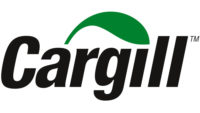News: FDA Announced New Tools
Food protection is one of FDA's top priorities, and that means guarding against both intentional and unintentional contamination of foods. "The tools FDA is providing will help members of the food and cosmetic industry identify opportunities to better guard against intentional contamination of their products," said CFSAN acting center director David Acheson.
In 2003, FDA issued a set of Food and Cosmetic Security Preventive Measures Guidance documents. These documents are aimed at operators of food and cosmetic establishments, as well as businesses that produce, process, store, repack, relabel, distribute, sell or transport foods, food ingredients, and cosmetics to help them minimize the risk of malicious, criminal, or terrorist actions involving products under their control.
The guidance documents are:
* Food Producers, Processors, and Transporters: Food Security Preventive Measures Guidance
* Importers and Filers: Food Security Preventive Measures Guidance
* Retail Food Stores and Food Service Establishments: Food Security Preventive Measures Guidance
* Cosmetics Processors and Transporters: Cosmetics Security Preventive Measures Guidance
* Dairy Farms, Bulk Milk Transporters, Bulk Milk Transfer Stations and Fluid Milk Processors Food Security Preventive Measures Guidance
Using feedback from industry, the FDA repackaged the information found in the guidance documents and created a corresponding self-assessment tool for each document. By using the tools, industry members can get a quick and detailed assessment of the measures they currently have in place to protect against intentional contamination of their products.
With this consolidated information, it will be easy for them to see where meaningful improvements to their current practices can be made.
The self-assessment tool asks the participant to mark the presence of a variety of food protection measures with a Y (Yes), N (No), N/A (Not Applicable) or Don't Know for each item. Examples of measures addressed by the self-assessment tools include the possibility of product tampering; identification of security procedures and responsibilities; and evaluation of response strategies in the event of product tampering or other intentional contamination.
From the January 7, 2008, Prepared Foods e-Flash
Looking for a reprint of this article?
From high-res PDFs to custom plaques, order your copy today!



